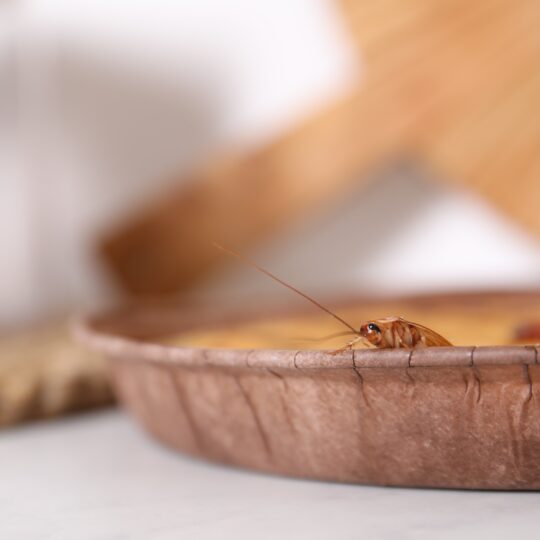What Do Indoor Pests Do as The Weather Cools?

Winter is on its way again, and the weather is starting to get colder. It’s a time when most pest activity tends to decrease, as many bugs either die off or hibernate. While rats, bedbugs, and other pests may still be present, most insect activity outdoors decreases, which means that insect activity indoors decreases.
Still, what about the pests already living on your property? If you do not currently have pest control, then chances are you have pests inside of your home that you have not yet run into. What do those pests do when the weather cools?
How Pest Behavior Changes Indoors During Winter
Cold weather doesn’t eliminate indoor pests – it changes their behavior. Many species that thrive in the summer outdoors can survive indoors if they’ve already found their way in. Central heating, moisture from plumbing, and food storage all create stable habitats that sustain pests through the winter if they haven’t been eliminated.
Some of the most common winter behaviors include:
- Seeking Stable Environments – Pests migrate to warm, protected areas within walls, crawl spaces, and insulation where temperatures stay consistent.
- Reduced Surface Movement – You may see fewer pests moving around, but many continue their normal life cycles in hidden areas.
- Increased Reproduction Indoors – Certain insects, such as cockroaches, thrive in indoor warmth and maintain year-round breeding cycles.
- Expanding Nests – Rodents take advantage of quiet spaces to enlarge their nests, stockpile food, and raise offspring during the colder months.
Because of decreased outdoor pests, new indoor pests become less common. But if they’re already there, pest activity can continue.
Common Indoor Pests and What They Do in Winter
Each pest species behaves differently as the weather cools. Some remain active and visible, while others retreat into hidden areas until spring.
- Mice and Rats – As outdoor temperatures fall, rodents move indoors seeking food and warmth. They gnaw through insulation, wiring, and packaging materials to create nests, often in basements, attics, and behind appliances. Once established, they can reproduce rapidly and contaminate food storage areas.
- Cockroaches – Warm, moist environments such as kitchens and bathrooms allow cockroaches to remain active all winter. They continue breeding if conditions are right, feeding on crumbs, grease, and organic debris. Even a small population can expand quickly if not treated.
- Spiders – Many spiders move indoors as temperatures drop, where they feed on other insects that remain active. Although most spiders are harmless, their presence is often a sign that other insects are available as food.
- Ants – Most ant colonies outdoors go dormant in winter, but colonies that have established themselves inside walls or foundations can stay active. Warm areas near plumbing and heating systems provide just enough comfort for them to survive year-round.
- Silverfish – These moisture-loving insects thrive in attics, basements, and bathrooms. They feed on paper, cardboard, and fabric, and remain active throughout the winter when protected from cold temperatures.
- Bed Bugs – Because they live primarily on and around humans, bed bugs are unaffected by outdoor weather. Their activity remains steady all year, especially in heated environments.
- Carpenter Ants and Termites – While these wood-destroying pests slow down in the cold, colonies inside heated structures remain partially active. If conditions stay warm enough, they continue tunneling and damaging wood materials.
- Stink Bugs and Boxelder Bugs – These insects often hide in wall voids or attics during winter. They remain dormant until spring, at which point they can reappear in large numbers when temperatures rise.
The thing to note most about all of these pests is that none of them need to diapause (a form of hibernation) nor do they always die off. What occurs outdoors does not necessarily occur indoors, nor do pests need it to. So, indoor pests that are allowed to stay active can still thrive.
Why Winter Pest Control Should Continue
Many homeowners pause pest control services during the colder months, believing activity has stopped. In reality, winter is a strategic time for treatment. With pests congregating in smaller, defined areas, it becomes easier to locate nesting sites and apply targeted solutions.
Continuing pest management during winter helps with:
- Detecting hidden infestations before populations grow
- Sealing entry points while pests are less active
- Reducing pest pressure for the upcoming spring season
Pests don’t disappear when temperatures drop – they simply move closer to where you live. Regular inspections, sealing gaps, and ongoing professional pest control keep your property protected year-round, ensuring that winter remains a time of rest for you, not for the pests sharing your space.
Special Offer for New Customers
$50 Off Complete Pest Control Services
Hurry! Offer Expires December 15, 2025